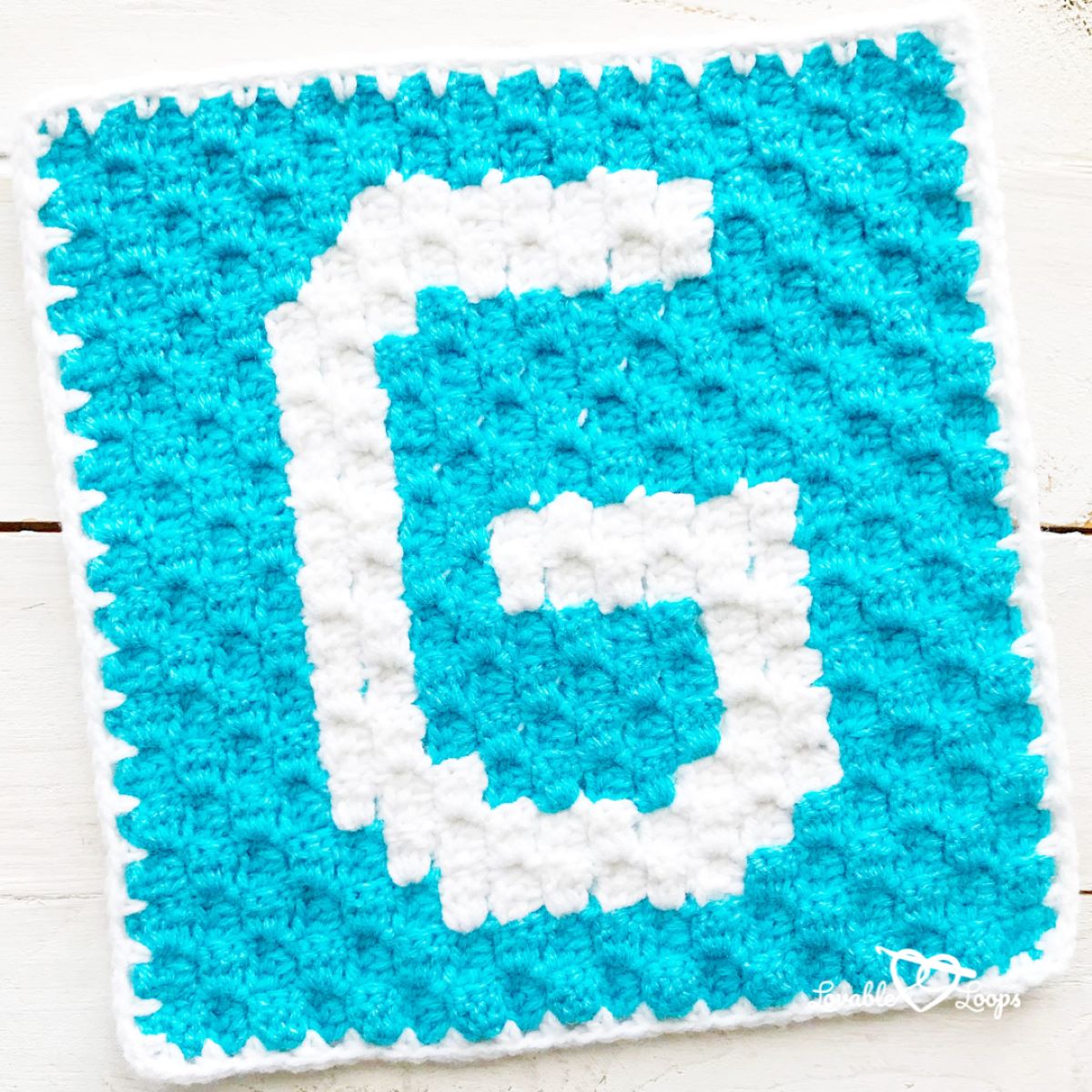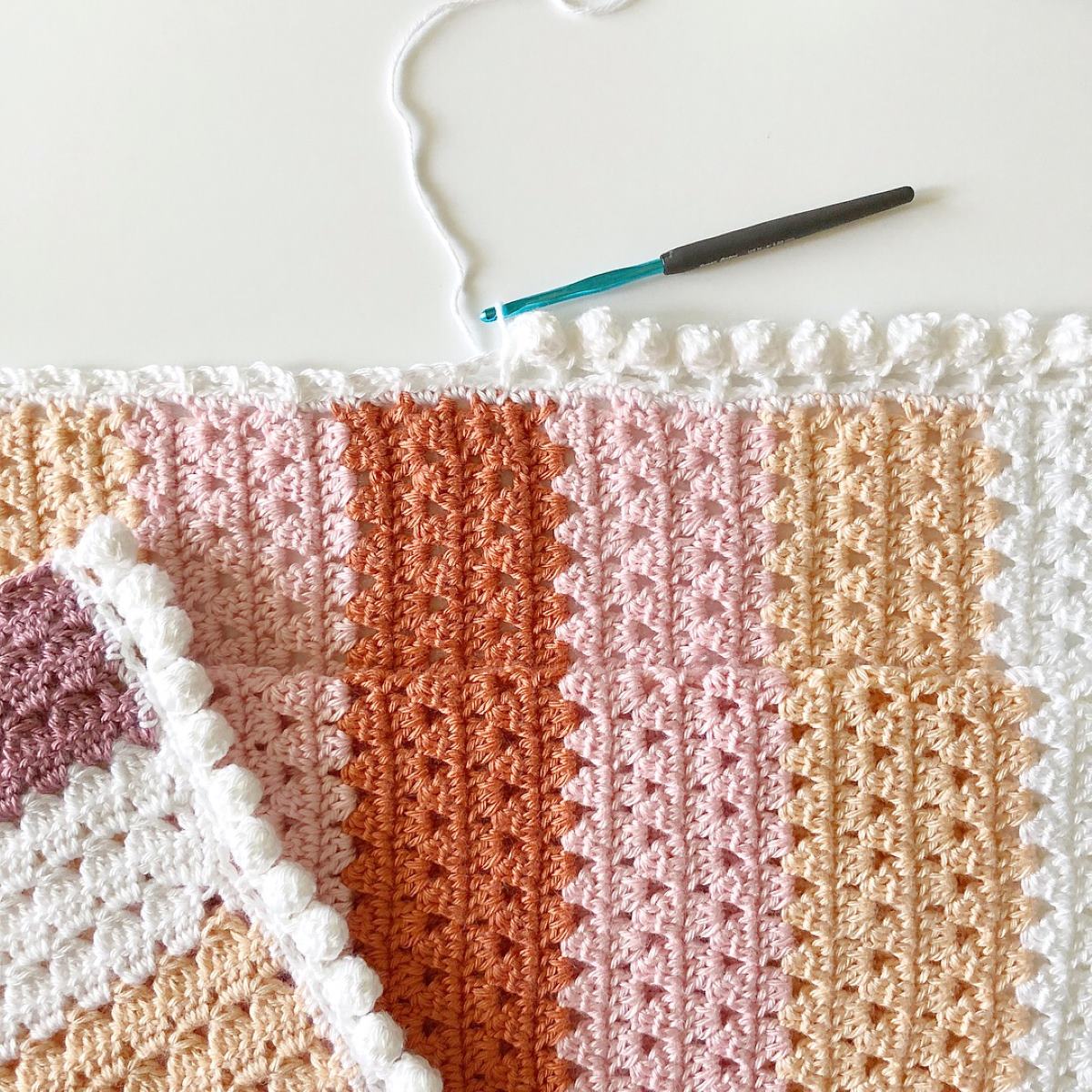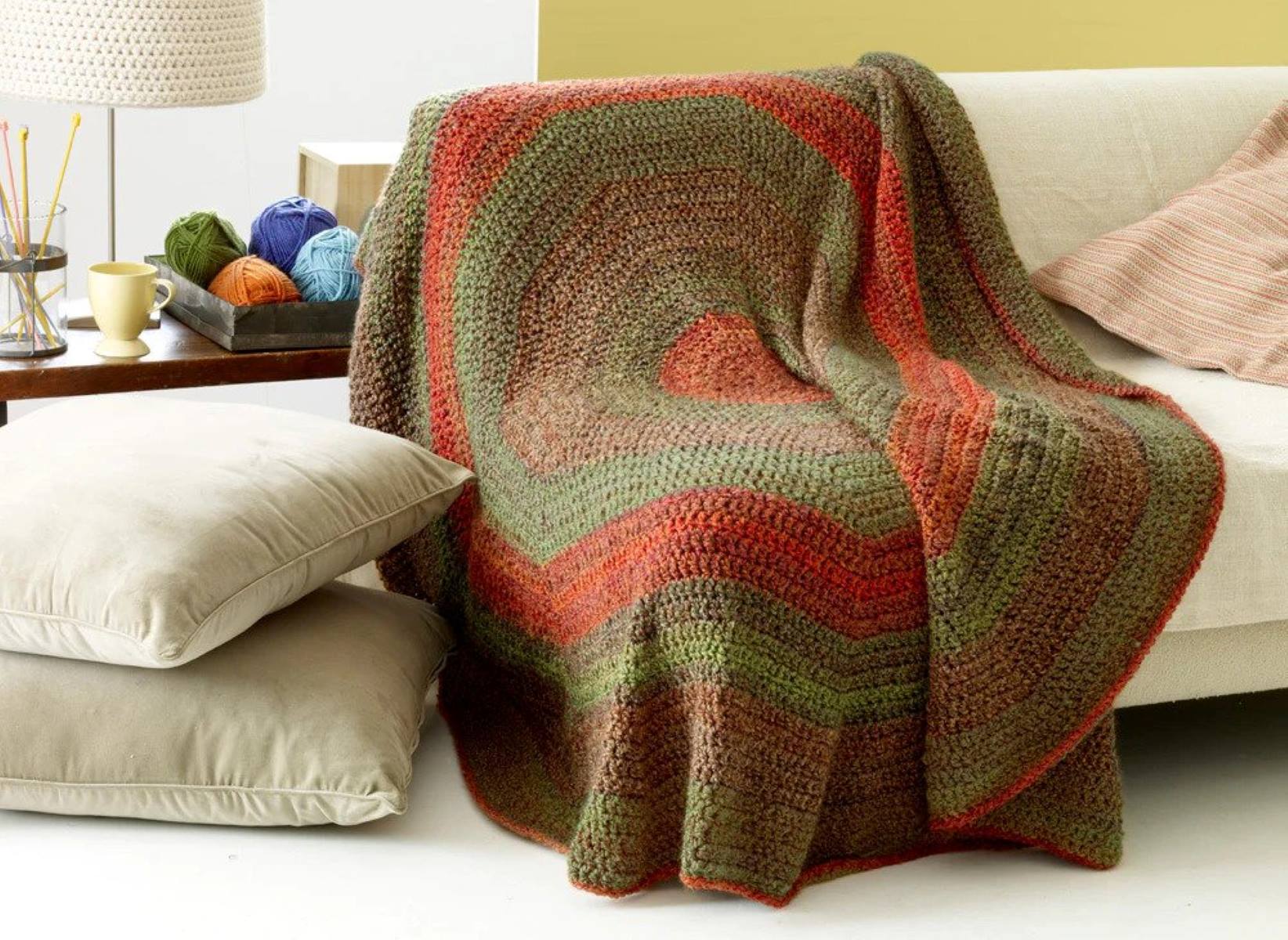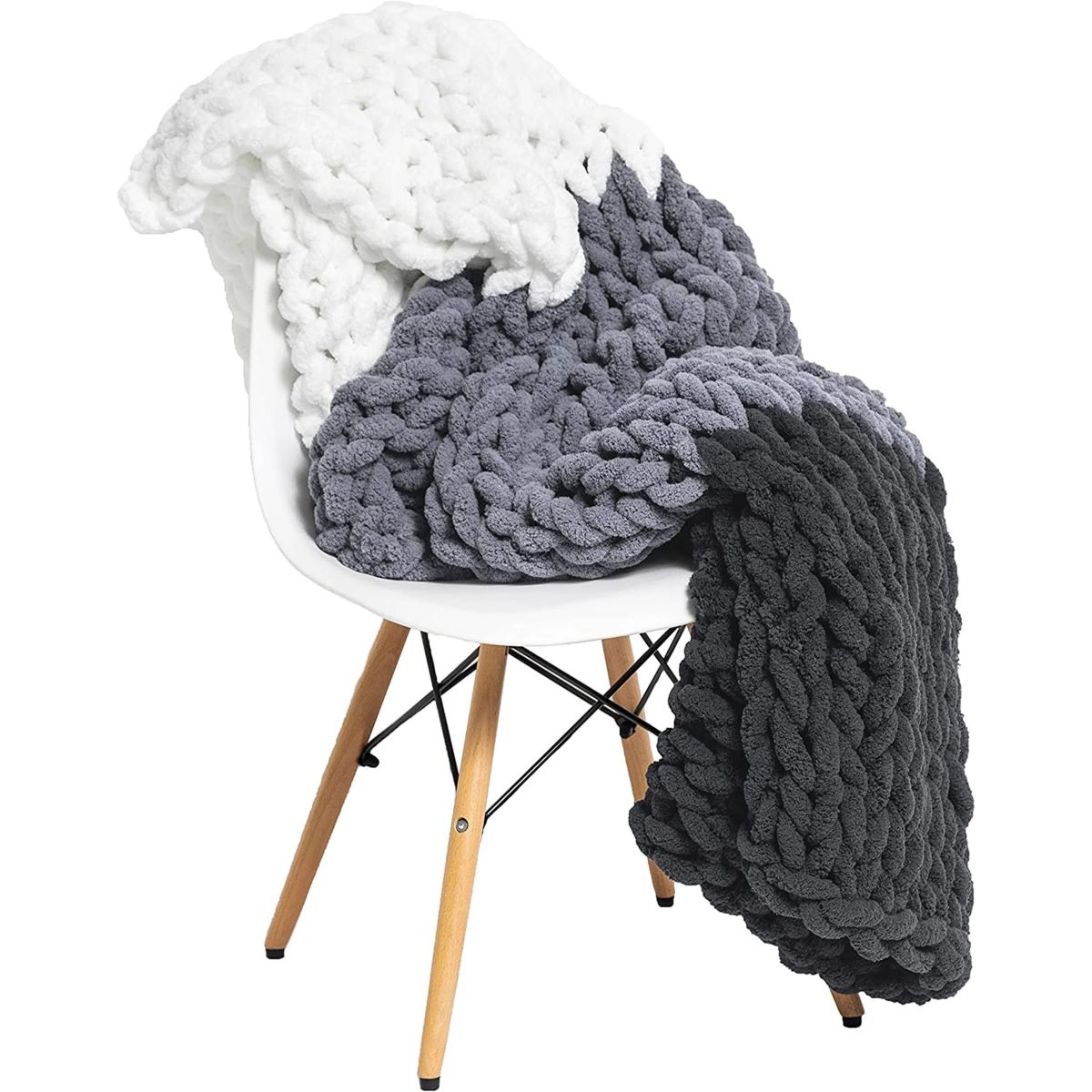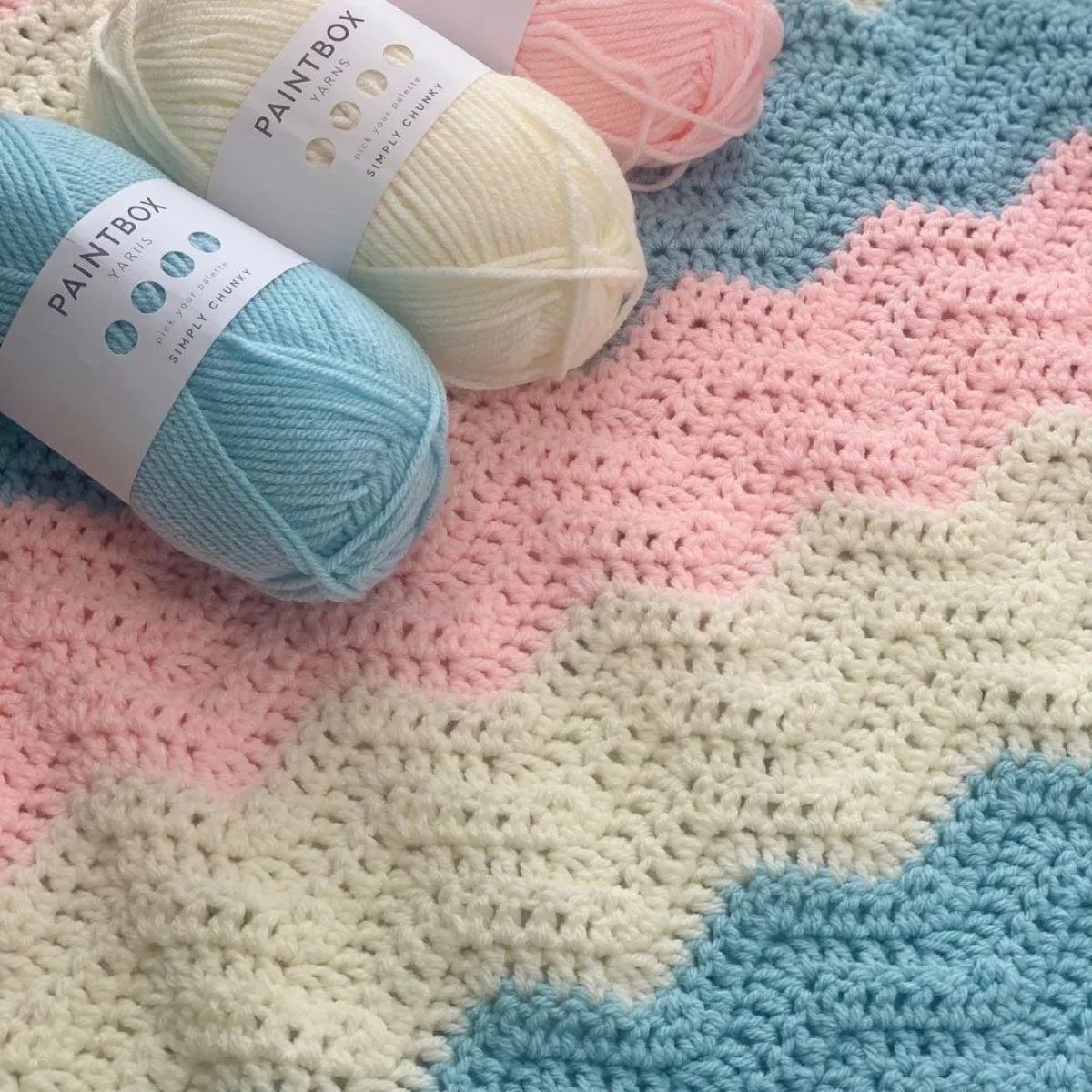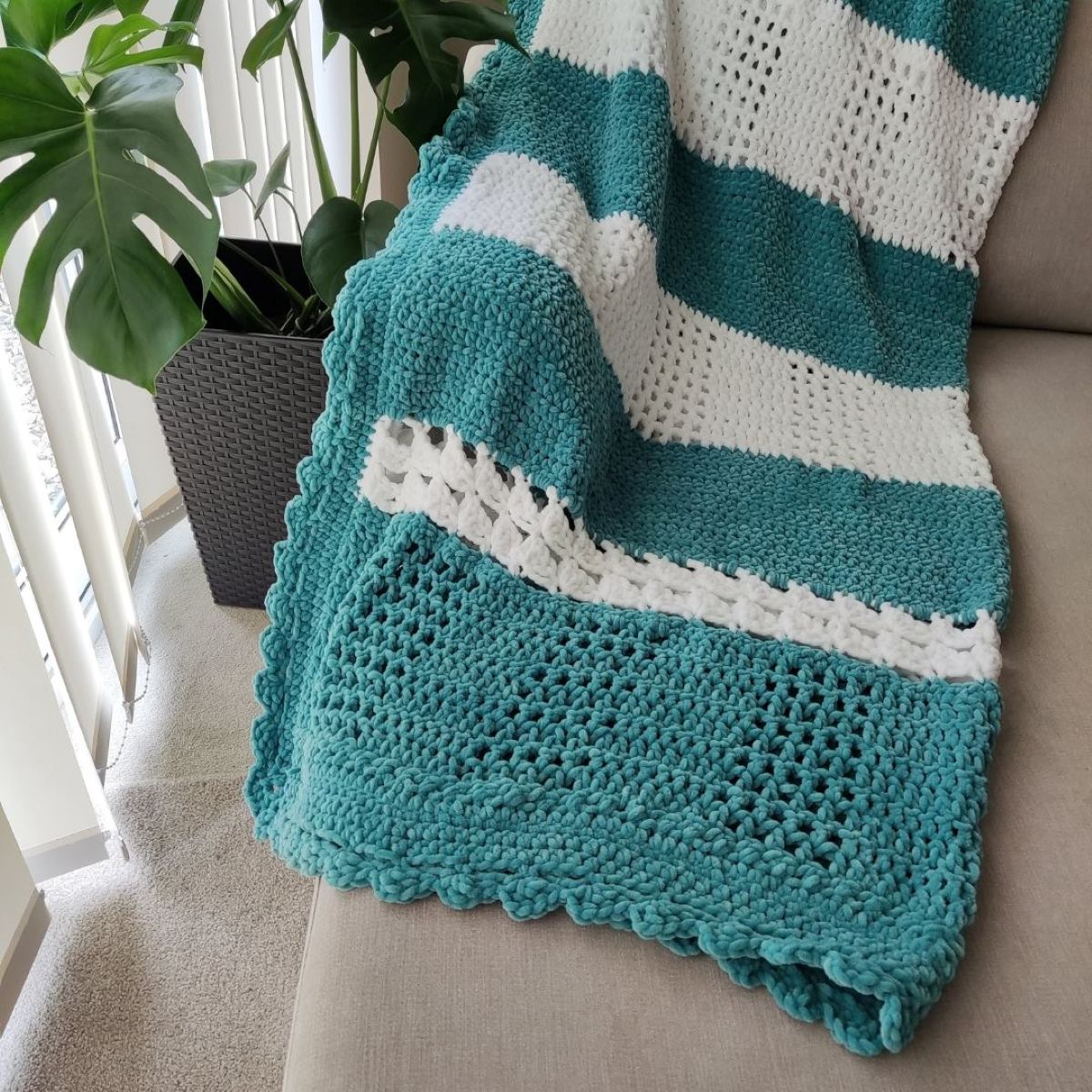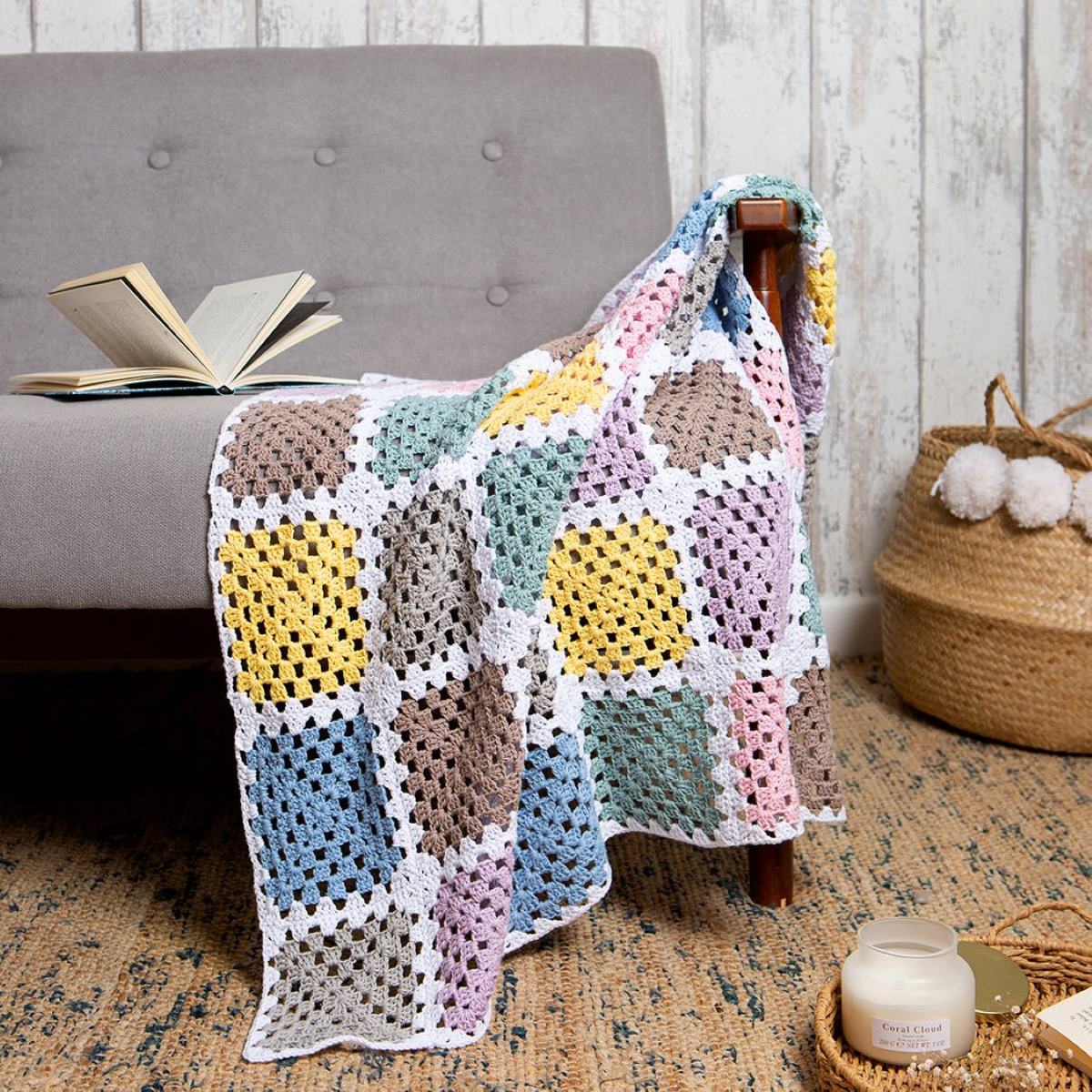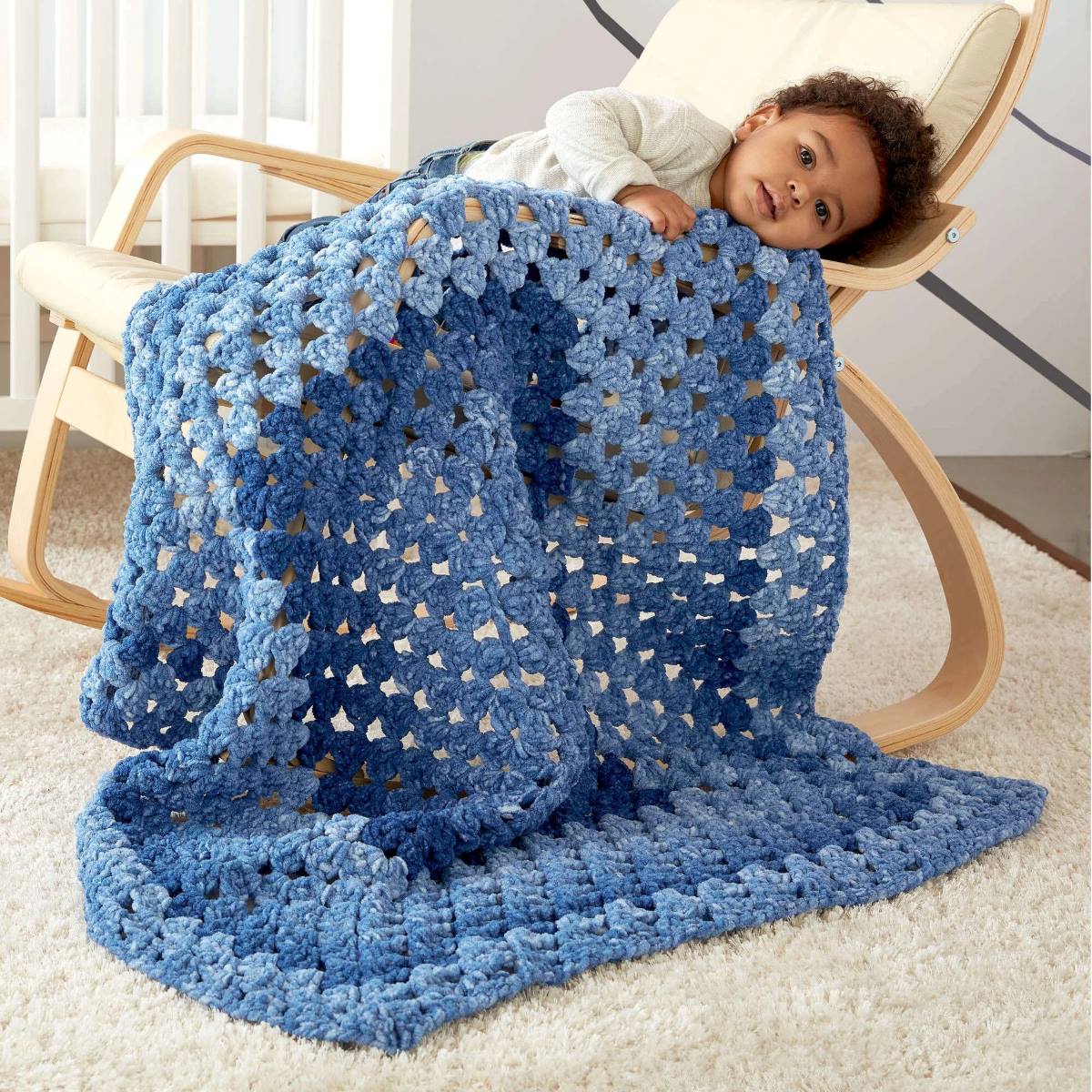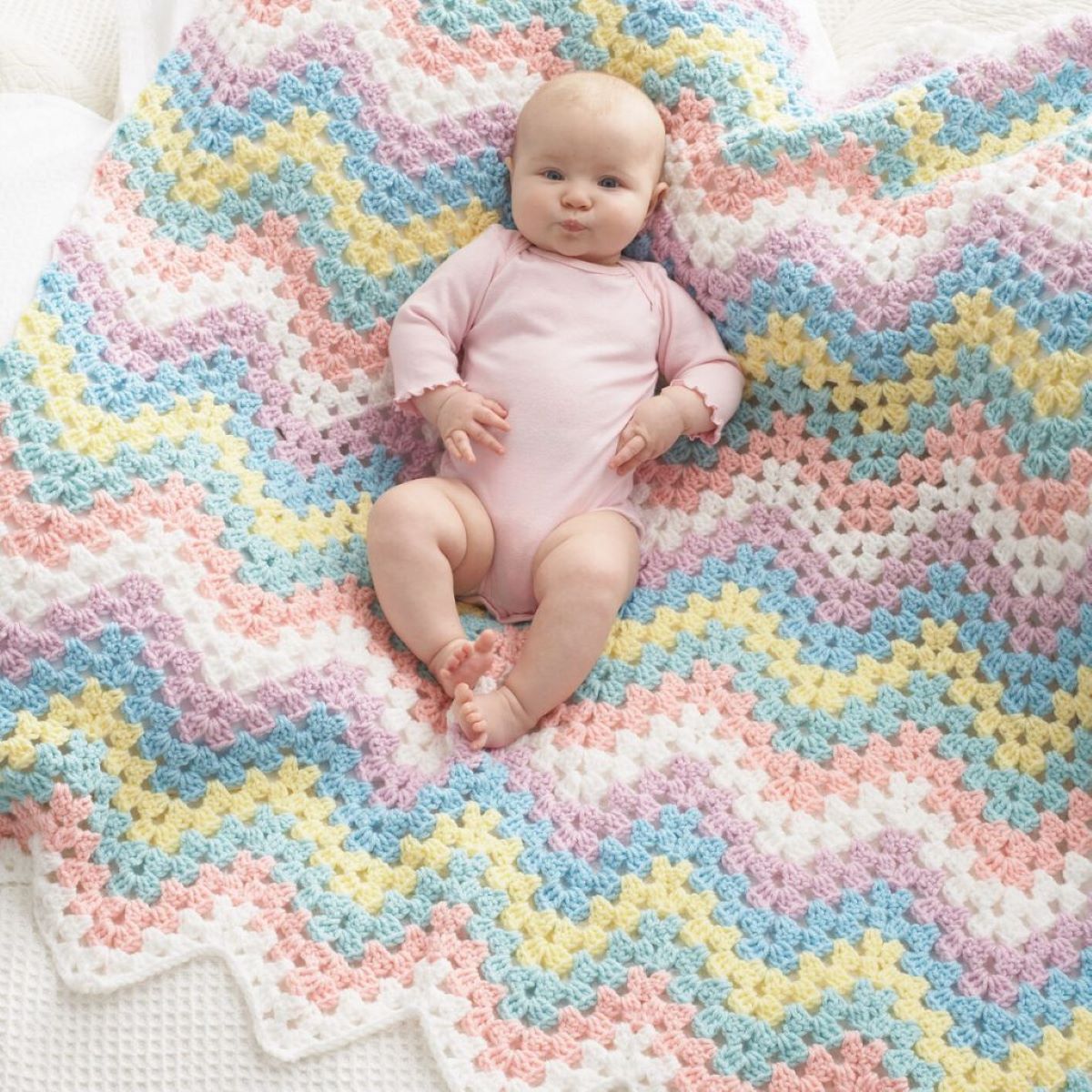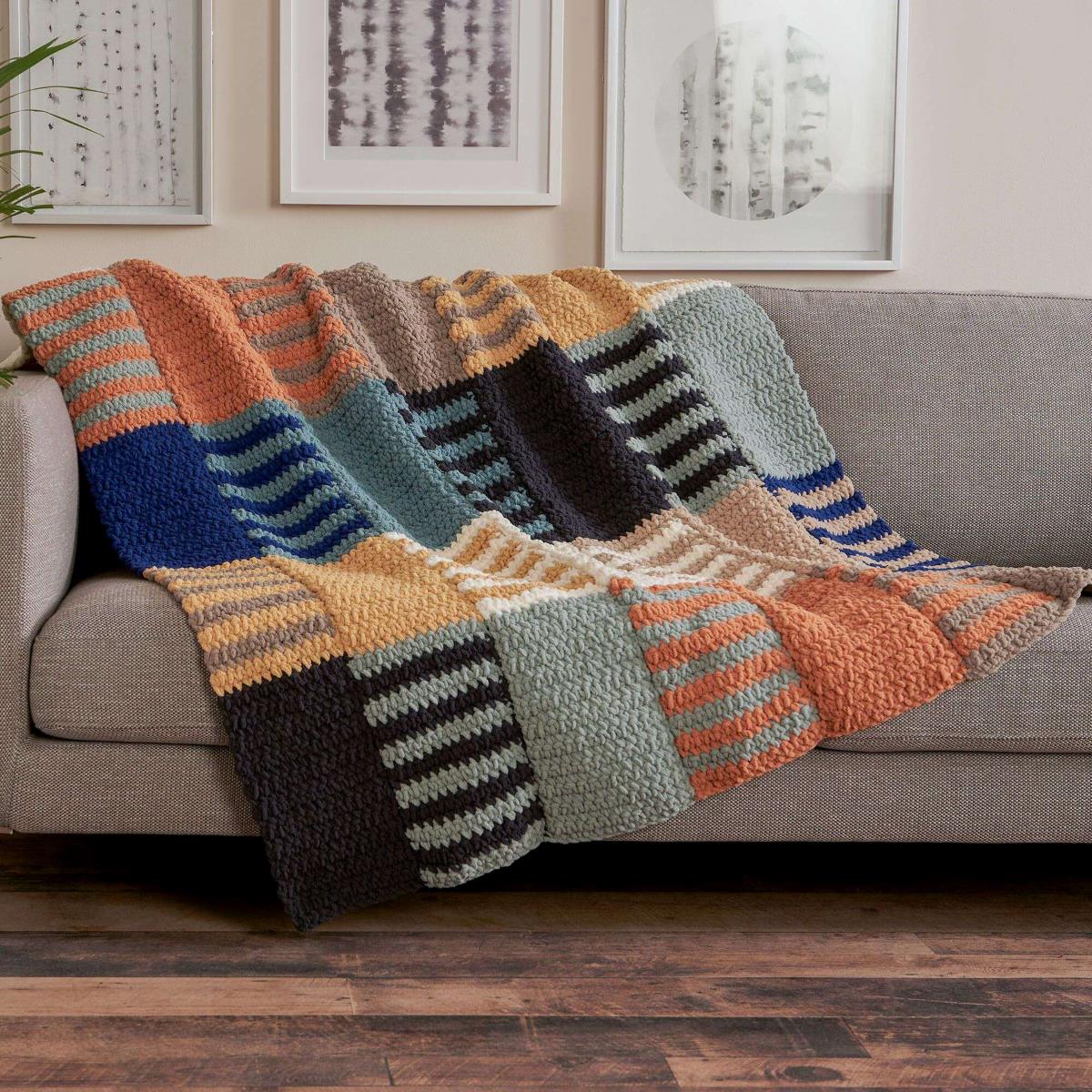

Articles
How To Block A Crochet Blanket
Modified: August 27, 2024
Looking for articles on how to block a crochet blanket? Find helpful tips and techniques to achieve professional-looking results.
(Many of the links in this article redirect to a specific reviewed product. Your purchase of these products through affiliate links helps to generate commission for Storables.com, at no extra cost. Learn more)
Introduction
Welcome to the world of crochet! One of the most satisfying and rewarding aspects of crocheting is being able to create beautiful blankets. However, no matter how meticulously you crochet your blanket, it may still require blocking to achieve that professional finish.
Blocking is the process of shaping and resizing a crochet project using moisture and/or heat. It helps to even out stitches, straighten edges, and give your blanket the perfect drape. In this article, we will guide you through the steps to block a crochet blanket, using both wet blocking and steam blocking methods.
Before we dive into the blocking techniques, let’s make sure you have all the necessary materials on hand.
Key Takeaways:
- Achieve a professional finish for your crochet blanket by mastering wet blocking and steam blocking methods. Patience, attention to detail, and the right materials are key to enhancing the appearance and drape of your handmade creation.
- Avoid common blocking mistakes and utilize helpful tips to ensure a successful blocking process. Embrace the transformative power of blocking to showcase your crochet skills and bring out the true potential of your handmade blankets.
Read more: How To Start Crocheting A Blanket
Materials Needed
Before you begin blocking your crochet blanket, gather the following materials:
- Finished crochet blanket
- Clean, flat surface (such as a table or blocking board)
- Tape measure or ruler
- Pins (rustproof T-pins or blocking pins work best)
- Blocking mat or towels
- Spray bottle filled with water (for wet blocking method)
- Steam iron or garment steamer (for steam blocking method)
It’s important to note that the type of yarn used for your blanket may also dictate the blocking method you choose. Some yarns may respond better to wet blocking, while others may require steam blocking. Make sure to check the yarn’s label for any specific blocking instructions.
Now that you have all the necessary materials, you’re ready to prepare your crochet blanket for blocking.
Preparing the Crochet Blanket for Blocking
Before you begin blocking your crochet blanket, it’s important to give it a gentle wash and light blocking. This will help remove any dirt or oils and allow the fibers to relax, making them more receptive to blocking. Follow these steps to prepare your crochet blanket for blocking:
- Fill a basin or sink with lukewarm water and a mild detergent specifically designed for delicate fabrics or wool.
- Submerge your crochet blanket in the water and gently swish it around. Avoid agitating or wringing the blanket to prevent it from stretching or losing its shape.
- Allow the blanket to soak for about 15 minutes.
- Gently squeeze out the excess water. Do not twist or wring the blanket.
- Lay the blanket on a clean, dry towel and roll it up to remove additional moisture. Press firmly to absorb as much water as possible.
- Unroll the towel and carefully remove the crochet blanket.
- Lay the blanket flat on a clean, dry towel or blocking mat, shaping it to its desired dimensions. Use a tape measure or ruler to ensure the dimensions are accurate.
- Secure the edges of the blanket with rustproof T-pins or blocking pins, being careful not to stretch the fabric excessively.
- Leave the blanket in this position until it is completely dry. This may take up to 24-48 hours, depending on the size and thickness of the blanket.
Once your crochet blanket is completely dry, you can proceed with the blocking method of your choice. In the following sections, we will explore both wet blocking and steam blocking methods in detail.
Wet Blocking Method
Wet blocking is a popular method for blocking crochet blankets, especially if the yarn used is natural fibers like wool or cotton. Follow these steps to wet block your crochet blanket:
- Start by filling a spray bottle with lukewarm water.
- Lightly mist the crochet blanket, ensuring the entire surface is damp but not soaking wet. You want the fibers to absorb the moisture without becoming overly saturated.
- Gently shape the blanket to its desired dimensions, using your hands to pull and adjust the stitches as needed.
- Secure the edges of the blanket with rustproof T-pins or blocking pins, placing them strategically to hold the shape while the blanket dries.
- Allow the crochet blanket to air dry completely. This may take anywhere from 24-48 hours, depending on the size and thickness of the blanket.
- Once the blanket is dry, remove the pins and admire your beautifully blocked crochet blanket.
Wet blocking not only straightens out the edges and evens out stitches but also allows the fibers to relax and settle, resulting in a more polished finished product.
Now that you’ve learned the wet blocking method, let’s move on to the steam blocking method for those who prefer a quicker blocking process.
When blocking a crochet blanket, use rust-proof T-pins to secure the edges to a blocking mat, then mist with water and let dry completely for best results.
Steam Blocking Method
The steam blocking method is ideal for crochet blankets made with synthetic or blended fibers that are more sensitive to water. Follow these steps to steam block your crochet blanket:
- Set up your ironing board or a flat, heat-resistant surface.
- Fill your steam iron or garment steamer with distilled water, following the manufacturer’s instructions.
- Adjust the iron or steamer to the appropriate temperature setting for the type of yarn used in your crochet blanket. Consult the yarn’s label for guidance.
- Hold the iron or steamer a few inches above the crochet blanket and gently pass it over the surface, allowing the steam to penetrate the fibers.
- While steaming, use your hands to shape and adjust the stitches, pulling gently to achieve the desired dimensions.
- Once you have steam-blocked the entire blanket, let it cool and dry for a few minutes.
- After the blanket is dry, remove the pins and marvel at your perfectly blocked crochet masterpiece.
The steam blocking method is quick and effective, providing instant results. It helps to relax the yarn fibers and set the dimensions of your crochet blanket.
Remember to exercise caution when working with steam to avoid burns. Keep a safe distance between the iron or steamer and your hands to prevent any mishaps.
Now that you’re familiar with both wet blocking and steam blocking methods, let’s explore some tips and tricks to make your blocking process even smoother.
Read more: How To Crochet A Star Into A Blanket
Blocking Tips and Tricks
Blocking your crochet blanket can be a breeze with these helpful tips and tricks:
- Always read the label or consult the yarn manufacturer for any specific blocking instructions or recommendations.
- If your crochet blanket has lace or intricate stitch patterns, use blocking wires or thread to define the delicate details.
- For stubborn edges, you can lightly spray them with water or use a damp cloth before securing with pins for a more defined shape.
- If you’re short on time, use a fan or a hairdryer set on a cool setting to speed up the drying process.
- Consider using blocking mats with grid markings for precise measurements and easier placement of pins.
- Keep a spray bottle of water nearby during the blocking process to lightly mist the blanket if it starts to dry out.
- Blocking can also be used to restore the shape of crocheted garments that have stretched over time.
- Experiment with different pin placements and stretching techniques to achieve the desired shape and drape.
- Take before and after photos of your crochet blanket to appreciate the transformative power of blocking.
Remember, each crochet project is unique, and the blocking process may vary depending on the yarn, stitch pattern, and desired outcome. Don’t be afraid to experiment and adjust the blocking method to suit your specific project.
Now that you’re armed with valuable blocking tips and tricks, let’s explore some common mistakes to avoid during the blocking process.
Common Mistakes to Avoid
While blocking can greatly enhance the appearance of your crochet blanket, it’s important to be mindful of certain mistakes that can hinder the blocking process. Avoid these common pitfalls:
- Avoid using excessive force or pulling too tightly when shaping your crochet blanket. This can lead to distortion or stretching of the stitches.
- Don’t rush the drying process. Allow your blanket ample time to air dry completely before removing the pins. Premature removal can cause the blanket to revert to its original shape.
- Avoid blocking your crochet blanket on a surface that is not flat or cushioned. Uneven surfaces can cause the blanket to stretch unevenly or develop unwanted creases.
- Do not use a high heat setting on your iron when steam blocking. This can damage or melt the yarn fibers, resulting in a ruined blanket.
- Avoid blocking your crochet blanket in direct sunlight, as it can cause fading or discoloration of the yarn.
- Don’t skip the pre-blocking step of washing and lightly blocking your blanket. This helps to remove any dirt or oils and allows the fibers to relax before the actual blocking process.
- Avoid overcrowding your blocking space. Make sure there is enough room for your blanket to lay flat and for air to circulate freely around it.
- Do not use sharp or rusty pins that can potentially snag or damage your crochet blanket. Opt for rustproof T-pins or blocking pins instead.
- Avoid blocking your blanket in a humid environment, as it can take longer to dry and increase the risk of mold or mildew growth.
By avoiding these common mistakes, you can ensure a successful blocking process and maintain the integrity of your crochet blanket.
Now that you’re well-equipped with the dos and don’ts of blocking, let’s wrap up with some final thoughts.
Final Thoughts
Congratulations! You’ve learned the art of blocking a crochet blanket and are now equipped with the knowledge to achieve that professional finish. Whether you choose the wet blocking or steam blocking method, the key is to be patient and thorough in the blocking process.
Blocking not only enhances the overall appearance of your crochet blanket but also improves the drape, evenness of stitches, and shape. It’s a crucial step in giving your handmade project that polished and finished look.
Remember to gather all the necessary materials, prepare your blanket properly, and follow the blocking method that suits the yarn type. Take care to avoid common mistakes, such as excessive force or rushing the drying process, and utilize the tips and tricks provided to make your blocking experience smoother and more successful.
Blocking is an opportunity to bring out the true potential of your crochet blanket and showcase your skills as a crocheter. So take your time, enjoy the process, and savor the moment when you unpin your beautifully blocked creation.
Now that you’re armed with the tools and techniques of blocking, go ahead and confidently tackle your next crochet blanket project. Happy blocking!
Frequently Asked Questions about How To Block A Crochet Blanket
Was this page helpful?
At Storables.com, we guarantee accurate and reliable information. Our content, validated by Expert Board Contributors, is crafted following stringent Editorial Policies. We're committed to providing you with well-researched, expert-backed insights for all your informational needs.
